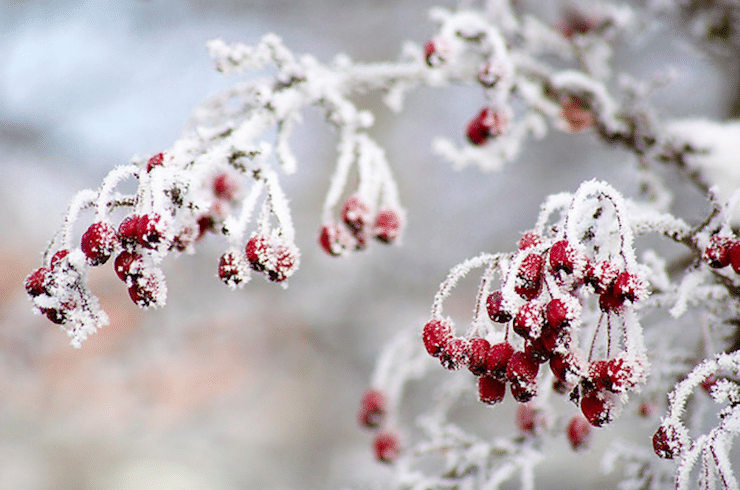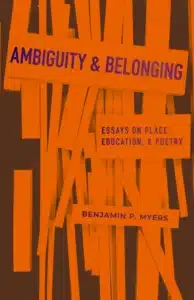
Benjamin Myers writes about the idea of place, education – and poetry
I’ve been trying to recall when, or how, I first ran across the poetry of Benjamin Myers. I read his Elegy for Trains: Poems in early 2014, and if I can clear the cobwebs away from my memory, it may have been through a recommendation of a friend I met at a writing retreat in Texas. However it happened, Elegy for Trains put me on the road to becoming a Ben Myers reader.
I know why I enjoy his poetry so much: I can’t read it without being reminded of my own family — my grandmothers, my aunts and uncles, and cousins on both sides. Family is anchored in the idea of place, and I can’t think of family without thinking of my mother’s tribe of Germans and Cajuns in New Orleans and my father’s smaller but character-filled family in Shreveport. When I read Black Sunday: Poems by Myers, I found myself reading it two and three times simply because of the family memories it evoked.
Myers, a professor of English and literature at Oklahoma Baptist University, doesn’t write only poetry; he also writes about poetry, education, and the idea of place. He’s collected his essays and articles in Ambiguity & Belonging: Essays on Place, Education & Poetry.
At the risk of turning into a fan-boy, I’ll say that I enjoyed his essays as much as I enjoy reading his poetry.

The second section deals with education and how it’s changed. As he has, I’ve watched the tides of modernity, “progress,” and technology wash against universities in general and liberal arts in particular, and I’ve done what I can to plug the holes in the dikes surrounding my own children and grandchildren. Myers argues that liberal arts colleges just might save civilization, and he offers some ideas about how these institutions might thrive.
The third section is about poetry. He’s a supporter of local poetry (and local poetry events), and he has some poetry suggestions for people who think they don’t like poetry. Our culture has largely abandoned tradition, he writes, and, whatever else you might want to say, poetry is rooted in tradition.
The fourth section is about specific poets — B.H. Fairchild, Joy Harjo, Geoffrey Hill, Jeanne Murray Walker, Mary Oliver, Paul Mariani, and several others. Some of the essays are reviews; others discuss the poets and their overall work. All are concise and insightful.

Benjamin Myers
The final section is about the poetic life, or living a life of poetry. In “I’m Over the American Homer,” Myers explains why he is falling out of love with Walt Whitman. He writes about Dante, whose Inferno was once described by a student as “disgusting.” He issues a warning about quitting your day job to write poetry (hint: you’ll starve). He discusses Hamlet, and he offers what he calls “a little homily on providence.”
Myers, associate professor of literature and poetry writing at Oklahoma Baptist University, served as poet laureate of Oklahoma from 2015 to 2016. He is the author of four collections, Elegy for Trains (2011), Lapse Americana (2013), Black Sunday (2019), and At the Family Book of Martyrs (2023). Elegy for Trains won the Oklahoma Book Award for Poetry, and his poetry has been published in numerous literary journals. Myers has also published A Poetic of Orthodoxy: Christian Truth as Aesthetic Foundation (2020). He received his B.A. degree from the University of the Ozarks and his M.A. and Ph.D. degrees in literature from Washington University in St. Louis.
It comes as no surprise, but the essays of Ambiguity & Belonging are as open and honest as the poetry Myers writes. And while he may have suffered in high school, his lack of athletic talent hasn’t hurt his ability to understand and discern one bit.
Related:
Benjamin Myers and Black Sunday
Benjamin Myers and The Family Nook of Martyrs
The Submerged Depths of Lapse Americana
Poet-A-Day: Meet Benjamin Myers
Photo by Igor Nitikin, Creative Commons, via Flickr. Post by Glynn Young.
How to Read a Poem uses images like the mouse, the hive, the switch (from the Billy Collins poem)—to guide readers into new ways of understanding poems. Anthology included.
“I require all our incoming poetry students—in the MFA I direct—to buy and read this book.”
—Jeanetta Calhoun Mish
- “The Summer We Crossed Europe in the Rain” by Kazuo Ishiguro - November 13, 2025
- Poets and Poems: Steven Flint Embraces Haikus - November 11, 2025
- Poets and Poems: Katie Kalisz and “Quiet Woman” - November 6, 2025

Sandra Heska King says
“it may have been through a recommendation of a friend I met at a writing retreat in Texas”
Sigh…
Sandra Fox Murphy says
I’m intrigued and will have to check out Myers’ work. I love the reverence of place, and much of my enlightened awareness of that came from a long-ago Tweetspeak workshop … I believe it was led by Laura Lynn Brown.